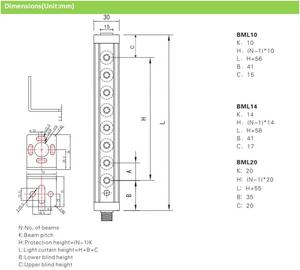Understanding Light Intensity Sensors
A light intensity sensor is an essential device used to measure the amount of light present in a given environment. These sensors capture the intensity of light and convert it into an electrical signal, which can then be interpreted and analyzed for various applications. With the growing demand for energy efficiency and smart technology, light intensity sensors have become instrumental in modern applications ranging from automated lighting systems to agricultural monitoring.
Types of Light Intensity Sensors
Light intensity sensors come in various types, each designed to suit different applications and environments. Here are the most common types:
- Photovoltaic Sensors: Utilize solar cells to convert light energy into electrical energy, commonly used in solar panels.
- Photodiodes: Semiconductor devices that convert light into an electrical current. Ideal for measuring light in various spectral regions.
- LDRs (Light Dependent Resistors): These resistors change resistance based on ambient light conditions, making them popular in simple light-sensing applications.
- Ambient Light Sensors: Integrated circuits used primarily in devices like smartphones and tablets to adjust screen brightness automatically.
Applications of Light Intensity Sensors
The versatility of light intensity sensors enables them to be used in numerous scenarios that benefit from precise light measurement, such as:
- Smart Lighting Systems: Automating the brightness of indoor and outdoor lights based on surrounding illumination, leading to energy conservation.
- Agriculture: Monitoring light levels in greenhouses to create optimal growth conditions for plants.
- Photography: Adjusting camera settings based on light intensity measurements to ensure perfect exposure.
- Industrial Automation: Enhancing workplace safety by controlling lights based on presence and ambient light conditions.
Features and Advantages of Light Intensity Sensors
The incorporation of light intensity sensors into various systems offers multiple features and advantages that improve functionality and user experience:
- Energy Efficiency: By adjusting lighting based on actual light conditions, these sensors can significantly reduce energy consumption and costs.
- Improved User Comfort: Automating light levels leads to better visibility and overall comfort in workspaces and living environments.
- Compact Design: Many light intensity sensors are designed to be small and lightweight, allowing for easy integration into existing devices.
- Real-Time Monitoring: Continuous data collection enables real-time adjustments and analysis, essential for many smart applications.












































